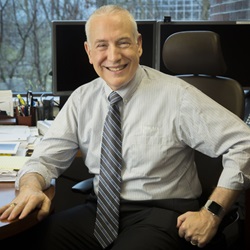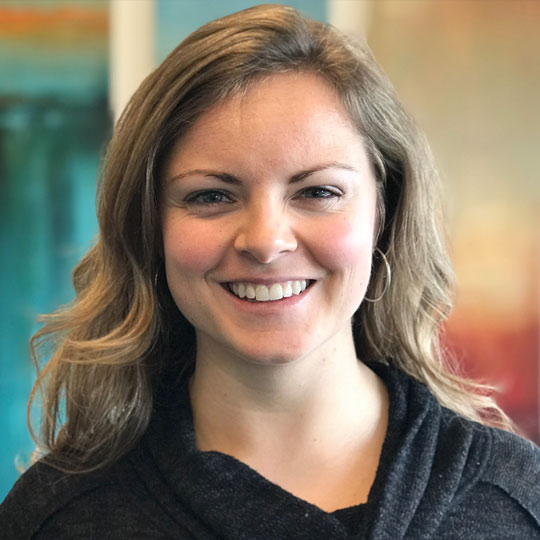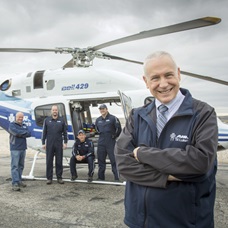Dr. Pate’s Prescription for Change
For St. Luke’s patients, technology and innovation mean safer brain surgery


There are reasons that St. Luke’s has become the premier destination for neurosurgical/neuro-interventional medical care in Idaho. Enhancements to St. Luke’s programs have come through investments in world-class physicians and technology. The stuff of science fiction just a decade ago is taking shape at St. Luke’s; new techniques and new technology, including augmented reality, are making surgery safer and easier and producing better outcomes.
Here to tell you about these exciting developments is St. Luke’s Health System Content Coordinator Alexis Bennett.
- David C. Pate, M.D., J.D.
The increased need for surgical solutions to neurological illnesses has led to a host of innovations in the field – and St. Luke’s clinicians are at the forefront of the transformation.
Experts say lifestyle factors – America’s obesity epidemic prominently among them – and improved detection and diagnosis are behind the push for improved practices and technology.
According to the Centers for Disease Control and Prevention, more than 93.3 million people in the United States are obese, and research continues to turn up correlations between obesity and neurological disease. Lifestyle factors such as obesity affect the functioning of the central nervous system, leading to a cascade of negative effects in the body and brain.
People are also living longer, increasing the likelihood of age-related ailments, and advances in medicine and technology are making earlier detection of Parkinson’s, Alzheimer’s and dementia, stroke-causing clots, brain aneurysms and benign and malignant tumors more common.
Driven in part by all these factors, St. Luke’s has implemented innovations, invested in new technology and borrowed approaches from other disciplines that make procedures safer and more convenient for patients.
One area in which emerging technology has made a huge impact is vascular disorders of the brain, including stroke. Strokes can be caused by blockages of vessels or bleeding in the brain. In the U.S. alone, one in 20 deaths is caused by stroke, and stroke is the leading cause of disability.
The American Association of Neurological Surgeons says risk factors such as high blood pressure, artery disease, high blood cholesterol, diabetes and generalized obesity contribute to an increased rate of stroke.
To make cerebrovascular treatment of stroke safer and easier for patients, St. Luke’s neurosurgeons have changed how they perform procedures, making them less invasive.
For years, the femoral artery, the main artery near the groin, has been favored for accessing the neck and brain for blood-clot removal and other vascular procedures because of its relative size. It’s large and easy to insert a catheter into, but there can be discomfort and a small but real risk of life-threatening hemorrhage.
Over the past decade, it has become best practice in cardiology to use the radial artery, the main artery at the wrist, to access the heart. Neuro-intervention now is following cardiology’s lead, using the radial artery for diagnostic tests and procedures on the brain.
Dr. Edward Duckworth, a St. Luke’s neurosurgeon, was trained in the approach earlier this year and has since used the radial artery for virtually all catheter-based procedures.
“Patients really like it because, when you puncture the femoral artery, they have to lay flat for four to six hours after the procedure,” he said. “If you use the radial artery in the wrist or hand, you put a little bracelet on at the end of the case, and they can leave the hospital in an hour and a half.”
The approach has also found its way into the treatment of brain aneurysms, which can be related to factors such as high blood pressure, smoking or heredity. A brain aneurysm is a weak spot in one of the major arteries at the base of the brain that usually occurs at a branch point. Left untreated, it can rupture and cause dangerous bleeding around the brain. One in 50 adults will have one at some point, and though they’re not always fatal, the possibility of rupture poses serious risks.
In June, St. Luke’s clinicians became the first in Idaho to treat a brain aneurysm using a newly FDA-approved device called the Woven EndoBridge (WEB), a mesh ball implanted into difficult-to-treat aneurysms. It’s designed to disrupt blood flow into the aneurysm, eliminating the risk of a hemorrhage-causing leak or rupture. The device can be placed through the radial artery.
Other innovations also are making brain surgery safer for patients in the Treasure Valley. St. Luke’s was one of the first to invest in a Kinevo microscope from optics company Zeiss. The microscope can utilize robotic movement and integrate with an endoscope, a specialized neurosurgical microscope, to make augmented reality surgery possible.
Paired with BrainLab, an image-guidance platform, St. Luke’s neurosurgeons easily can map normal structures and pathologies within the brain. The software overlays a computer-generated image that’s then displayed as an on-screen overhead. The system allows surgeons to navigate surgeries with increased precision.
St. Luke’s has performed approximately 80 augmented reality surgeries, and the technology has been a game-changer for its ability to accurately locate tumors and other lesions to be removed, even beneath the brain’s surface. The approach has been used for brain tumors, brain aneurysms and arteriovenous malformations (AVMs).
“In the past, surgeons needed to rely on anatomical landmarks on the skin and skull to estimate the position of internal targets,” Dr. Duckworth said.
“With this, you know exactly where you are in real-time throughout the surgery.”
In addition to being on the forefront of brain tumor and stroke treatment, St. Luke’s neurosurgeons have taken strides to make chronic conditions more manageable.
St. Luke’s has begun to offer surgeries for medically refractory epileptic patients, providing an option for those who cannot manage epilepsy symptoms with medication alone, and in 2017, turned its focus to services that previously were only available out of state for Parkinson’s patients.
An estimated 41 per 100,000 people are diagnosed with Parkinson’s after the age of 40. That number jumps to 1,900 per 100,000 among those 80 and older. With longer life expectancies come more diagnoses and more years a patient potentially lives with symptoms. And if tremors and rigidity aren’t lifestyle-affecting, the increasing number of medications used to manage symptoms often are.
A surgery called deep brain stimulation (DBS) is offered to patients with Parkinson’s disease and essential tremor. The procedure uses electrodes placed strategically in the area of the brain involved with the symptoms to carry electrical impulses generated by a battery pack. The battery pack is programmed and tested for the appropriate strength and frequency of electrical impulse.
“For patients, it can be life-altering,” said Dr. Derek Martinez, a St. Luke’s neurosurgeon. “The tremors get better, (patients) may be less rigid, they’re more kinetic, they take less medication—it’s great.”
St. Luke’s has long looked to review boards to evaluate oncology cases and establish consistency in diagnosis, recommendation and approach. Parkinson’s patients and essential tremor cases are similarly reviewed, and potential candidates for the procedure undergo extensive screening, including psychiatric assessment, to ensure that DBS is the appropriate approach.
St. Luke’s, Dr. Martinez said, “is really doing a good job to provide the whole spectrum of neurosurgical care.”
About The Author

Alexis Bennett is a consultant for St. Luke's Community Health and Engagement.





